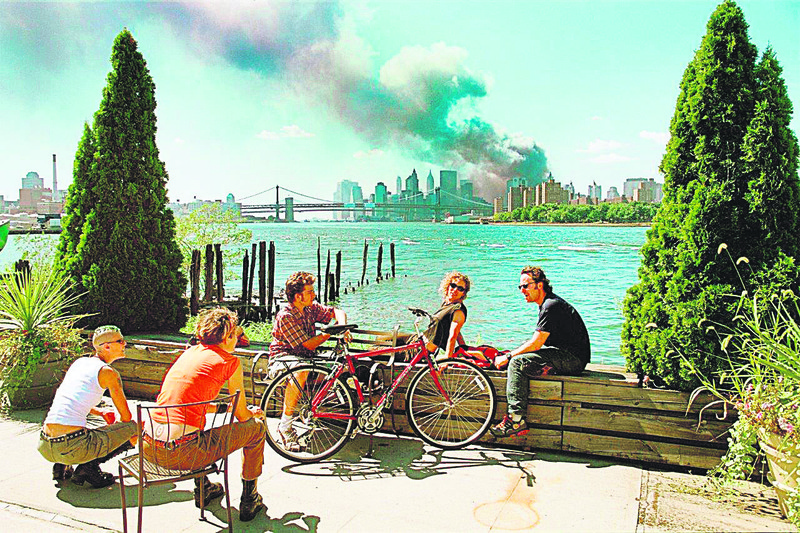‘Magnum: Contact Sheets' exhibition showcases iconic photographs from the agency's archives

As an untalented and unpromising young photographer I used to spend all my pocket money on Ilford black-and-white films in high school. I was a fan of iconic photographs from the Magnum agency and, although my mediocre photographs of stray dogs and Istanbul mosques had nothing exceptional about them, I made sure to use the best technical equipment available in their production. That was how I learned about contact sheets, the subject of a major new exhibition at Istanbul Modern that runs until Aug. 2. Produced in darkrooms, contact sheets, or contact prints, give photographers thumbnail-like previews of their images, providing them with the chance to see dozens of images together on the same sheet. Often using an enlarger, the photographer can choose the best image before printing it onto photographic paper. The photography hall in Istanbul Modern's ground floor is filled with contact sheets belonging to some of the world's greatest photographers. "A contact sheet is a little like a psychoanalyst's casebook," writes Henri Cartier-Bresson, whose photographs of Spain are on display. "The contact sheet is also a kind of seismograph that records the moment. Everything is written down - whatever has surprised us, what we've caught in flight, what we've missed, what has disappeared, or an event that develops until it becomes an image that is sheer jubilation." Cartier-Bresson's photographs, taken in April 1933, are placed at the entrance and accompanied by a first person account of their production. This is a pattern repeated throughout the exhibition and one that works quite well. The only problem is that texts are placed a bit too close to the ground and it is not very easy to read them."A contact sheet is full of erasings, full of detritus," writes Cartier-Bresson. "Pulling a good picture out of a contact sheet is like going down to the cellar and bringing back a good bottle to share." "Magnum: Contact Sheets" offers numerous good bottles, taking us on a historical tour of the 20th century. We visit a beach in 1930s Italy where Herbert List's photograph of a Dalmatian lying next to a pair of legs unsettles us with its beauty. We visit Normandy through Robert Capa's iconic images of the D-Day landings. We visit dramatic scenes from the 1968 Paris riots before traveling to Tiananmen Square to witness an outrageous attempt to stifle dissenting voices. "Because contact sheets provide raw images of the photographs,without any interventions in the process, they offer the artist an opportunity for self-criticism and making a choice," the exhibition program informs us. "In this sense, looking at contact sheets is like entering the photographer's private area of work, which he or she keeps secret. On the other hand, by showing us the before and after of the unique scene selected by the photographer, they enable us to witness how that moment came to be. They give the viewer a sense of walking alongside the photographer and seeing through their eyes as they capture the scene. Contact sheets give clues as to the artist's working process, the way they approach the subject matter and the extent to which the selected snapshot reflects reality."Elliot Erwitt's "Kitchen Debate" photograph of Richard Nixon jabbing his finger at Nikita Khrushchev is one of those iconic snapshots. The image was later used for a 1960 Nixon campaign poster and we learn that it came "toward the end of a contact sheet depicting mostly amicable exchanges between the two politicians." The contact sheet of Philippe Halsman's "Dali Atomicus" shows how difficult it was to capture the famous painter in an image that reflected his surrealist aesthetics. Eve Arnold's commentary about her iconic 1961 photograph of Malcolm X for Life magazine gives us insights into the personality of its charismatic subject. Thomas Hoepker's controversial photograph of the 9/11 attacks appears on the exhibition poster. Reading his first-person account of the day is quite chilling. "On the morning of September 2001, a call from the Magnum office alerted me to the World Trade Center attacks," Hoepker remembers. "Horrified and paralyzed, I watched TV in my Manhattan apartment. Finally, I made up my mind to get in the car. Driving through Queens and Brooklyn, I took some pictures of the plume of smoke on the horizon, behind a cemetery. Eventually I came to a spot on the East River with a good view of lower Manhattan and a group of young people sitting between trees. I snapped three images, instinctively, then drove on and forgot about the scene."
Hoepker's photograph depicts a group of very relaxed looking Americans sitting in the sun in New York, framed by the view of Manhattan where the twin towers had been hit by airliners before collapsing amid a terrifying cloud of smoke. Hoepker's image, which created controversy when it first appeared in 2006, is one reason among many to visit "Magnum: Contact Sheets", an exhibition that made me want to be a photographer again.
'End of Dreams' is produced by qwatz, a.i.r. ROME.
Last Update: March 02, 2015 12:09
